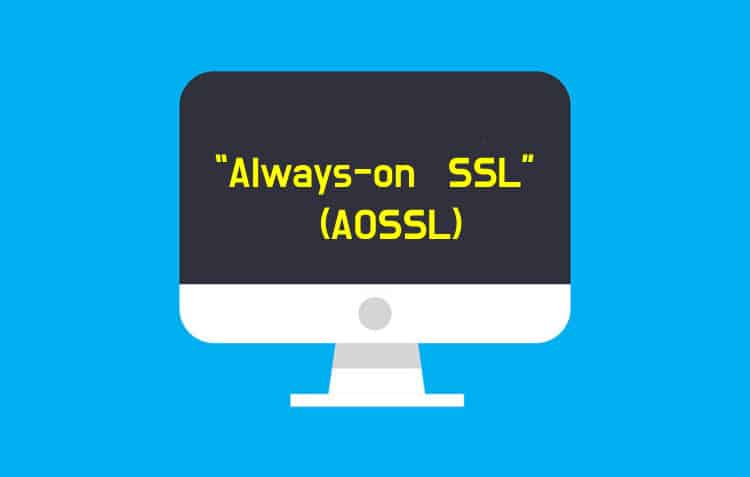We are all acquainted with the SSL Certificates and how they provide protection to our data online. Well, just installing the SSL certificate does not make our communications on the internet secure. But with the AOSSL (Always-on SSL), you not only provide security to your site visitors at login or checkout pages but also on the other pages which do not seem that much important. But when you secure all pages of your websites, it increases your site’s reach and you might get more visitors or views because the “Secure” word in the address bar provides a sense of security to the user.
What is HTTPS Everywhere?
Now, you would have a question what is HTTPS Everywhere then and why not use that. So, here is a thing as told earlier many owners of the website only secure the pages like login and the transaction pages by using SSL, and other pages are still left unsecured. Due to this our browser keeps jumping from the ‘HTTPS’ to ‘HTTP’ and we are enabled to use ‘HTTPS Everywhere.
HTTPS Everywhere was started so as to code the websites in order to avoid malicious URLs participation and to supply utmost security to google users across the globe. it had been the step to enhance security around google services or any website that wish to seem legitimate to its clients. ‘HTTPS’ allows security for our website by encrypting any credentials ever entered on any site.
With increasing internet threats, it has become a prerequisite to use AOSSL (Always-on SSL) or HTTPS Everywhere. A continuation of SSL connection would secure each one of the pages, cookies, and sessions. Moreover, your client’s knowledgeable data is secure, regardless of on what page they are. Thus, making sure that all the online connections are completely secure.
SSL Certificates are present in the security layer in the web browser. All the files are configured there, so whenever the client’s server tries to make a connection with the website’s server, the configuration of the SSL certificate is done and then the HTTPS extension is enabled.
Always-on SSL basically means to have HTTPS everywhere that is to have security for each and every page of your website. To know that let’s learn how to enable SSL certificates and HTTPS everywhere.
Steps to follow to enable the SSL Certificate are as follows:
– Open the web browser of your choice, but here we are going to explain the enabling process using the Google Chrome web browser
– As soon as you open Google Chrome, open the settings through the three dots on the top right corner.
– The settings menu will open, now choose the ‘Select Advance Settings option’.
– Now, click on the ‘Network’ and select the ‘Change proxy settings’
– Then, select the Advance option and go to the security settings.
– Lastly, select all the boxes of SSL and TLS Version.
– Select the ‘OK’.
Steps to follow to install and enable HTTPS Everywhere (Always-on SSL):
– Click on the web browser from your taskbar.
– Now search for https://www.eff.org/https-everywhere.
– As soon as reach this page, look for a section relating to ‘recent release’.
– Now, navigate through those releases and find which particularly is fit for your computer.
– As soon as you install it, it is automatically enabled to protect your server’s data.
How to make HTTPS seen while visitors access my website?
Now, what generally happens is that an SSL certificate as soon as it is installed, automatically starts to operate, but for some web pages it will still show “not secure” when accessed. This method will require you to create a ‘custom configuration’, so that your site is always redirected to the HTTPS. So, follow the following steps to enable Always-on SSL:
– Open your website’s control panel.
– Now, access the file manager, you will find it under the “file & Security” option.
– Now a window will appear, and you will see a blue “upload” button on the top left corner.
– A drop-down menu will appear, select the “new other files” option.
– Upload the file, with the name “.htaccess”.
– Now, select the .htaccess file.
– As soon as you will do this, you will see your window will divide into two sections.
– On the right section, you will see an ‘edit’ option at the top, click on that.
– Now, after selecting the edit option, you will be able to edit the text or code of the .htaccess file.
– Paste the following code and save the file.
#Rewrite everything to https
RewriteEngine On
RewriteCond %{HTTPS} !=on
RewriteRule ^(.*)$ https://%{HTTP_HOST}%{REQUEST_URI} [L,R=301]
Now, you will be redirected to HTTPS and the visitors on your site will always see “secure” beside your website’s URL.
Lastly, why is HTTPS so important for our website?
It conjointly makes your platform safe for all the visitors clicking on your weblog to visit, by preventing traducers to grasp your visitor’s activity and also preventing the attacker from accessing any info regarding your visit. Solely significant that had to learn you’re mercantilism your content by making views on your content, that motive might only be reached if you give away of security to your viewer. Because the increase of the cybercrimes has led the traducers to send the virus to your visitor’s system or in your website’s server.


